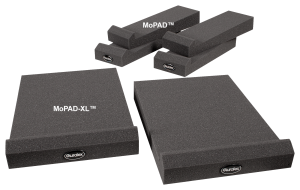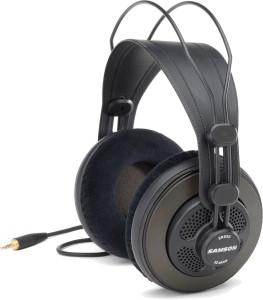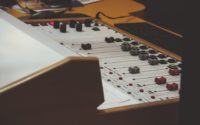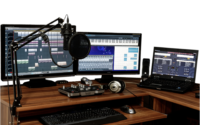Awesome Studio Upgrades Under $200
Maybe you’ve got a little bit of leftover Christmas cash, a tax refund on its way, or some Guitar Center gift cards you received over the holidays burning a hole in your wallet. Or maybe you’re starting to get a little more serious about your home studio and want to add to it without breaking the bank. Good news! Here are five pieces of gear under $200 that I think are a great value and will pay for themselves in no time.
Akai Mini MPK MkII
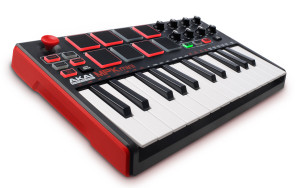
Dammit Jim, I’m a guitar player, not a keyboardist.
That’s not to say I don’t get oodles of use out of this thing. I’ve got one hanging out in front of me for basic programming. The majority of the music I do is pretty guitar heavy, but every now and then I’ll toss in a synth pad or string patch into a recording, and it’s **much** easier for me to key something in with a keyboard than using a mouse to drag MIDI notes around the visual grid.
An added bonus are the pads and knobs, which can be assigned to any parameter in your DAW, whether it’s a synth filter, or automating an FX send in your console. The pads are great for triggering samples too – they’re firm and feel good under the fingers.
The knobs and pads respective MIDI signals can be changed with Akai’s free MPC management software, and you can save different settings to each of the pads. If you’re not doing a lot of heavy programming, but still want something that can help you get out of your own way when you **do** need to do some programming, this is a great option.
Amazon (Affiliate Link)
Auralex MoPads Speaker Isolation Pads
I would almost call these a necessity, more than an upgrade. If your studio monitors are sitting directly on your desk surface, then your desk is acting as a speaker as well, vibrating along with your monitors, altering the sound you’re hearing, in turn negatively affecting your mixes.
The Auralex MoPads lift your monitors off your desk surface, isolating the speakers from otherwise resonating with your desk. This gives you a much more accurate sonic picture coming at your ears.
Amazon (Affiliate Link)
sE Reflexion Filter Pro
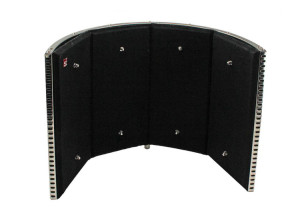
Think of it like a portable vocal booth. Home recording studios usually aren’t perfectly treated rooms. A common side effect of this is room sound bleeding into your recordings. If you have a decent sounding room, this might not be a problem, particularly if you’re recording an acoustic guitar or an amplifier. But with a vocal performance, more often than not, you’ll get better results and have an easier time mixing it if you have a clean, tight recording. If you’re tired of stuffing your singer (yourself?) into a closet, consider picking one of these up, especially if you’re using a condenser mic to record, since they’re usually more sensitive to room reflections.
Amazon (Affiliate Link)
PreSonus Faderport
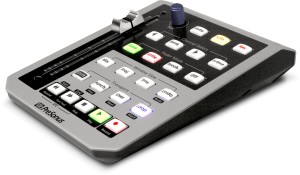
I honestly don’t know how I got on without this little guy for as long as I did. I’m a huge proponent of PreSonus, own a fair bit of their gear, and use their DAW (Studio One), so I may be a little biased.
Automation truly is the key to taking your mixes from “pretty good” to “top-notch.” As much as I would love to have a desk with 18 faders flying all over the place, those larger controllers aren’t exactly easy on the wallet. Enter the FaderPort. Odds are, you’re only going to be writing one track of automation at any one time. The FaderPort’s long-throw, touch sensitive fader is an excellent way to get around your DAW, whether you’re on Studio One, Reaper, Pro Tools, or insert-your-DAW-of-choice-here. The pan pot and transport controls are just icing on the cake – the fader alone makes this piece of gear worth its price.
Amazon (Affiliate Link)
Samson SR850/SR950 Headphones
I’m kind of cheating here by listing two headphones in the place of one “upgrade,” but there are a few reasons. For one, both of these headphones can be had for a combined price well under out $200 mark. For two, you might already have a pair of closed back or open back headphones, and would like to fill out your collection with another set.
A quick primer: open-back headphones (the SR850 in this case) are considered better for headphone mixing. I don’t recommend mixing entirely on them, but a decent set of open-back cans are great for checking mixes, especially if they reproduce bass frequencies well (these do). If you absolutely must mix on headphones, then open-back is the way to go., and I would even recommend trying some sort Closed-back headphones are better suited to recording. Since the drivers are closed off, they minimize any headphone bleed; the last thing you want to hear in that otherwise perfect finger-picked acoustic guitar track is hearing the click in the background tick-tick-ticking away. Closed-back headphones aren’t idea for mixing or checking your mixes, but if you can only have one set of headphones, and are doing a lot of mic’d recordings, they’re a must.
Samson’s SR850/950 are easy on the wallet, and do a damn fine job, especially considering their price tag. I check all my mixes on my 850s.
SR850: Amazon (Affiliate Link)
SR950: Amazon (Affiliate Link)
-
SoundAssured
